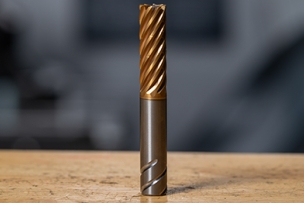Here’s a quick, simple and visual way to see the most commonly used end mills in today’s machining and their basic application in this must-see infographic.
Designed with cutting teeth on the face and edge of the body, end mills are intended to cut metal in several directions. While they might look similar to drills, different end mill types function in distinct and specific ways. They are used in applications for profile milling, tracer milling, shape milling, face milling and plunging. Think: Cutting out the sides of a given material including steel, aluminum, titanium and hybrid, composite materials, such as carbon-fiber reinforced polymer, which is used in many aerospace applications.
Certain end mill types are manufactured for specific diameters, lengths, flutes and protective coatings. These coatings include titanium nitride, titanium carbonitride, titanium aluminum nitride, aluminum titanium nitride and zirconium nitride.
The variety of end mill coatings work with the spectrum of metal used in today’s machining. Coatings help make tools last longer—and often allow tools to be run at much higher spindle rates than uncoated tools.
Another key aspect of end mills are their unique flute design. MSC, on its “Tech Essentials End Mills” page, describes them as:
“Flutes feature grooves or valleys that are cut into the body of the tool. A higher number of flutes increases the strength of the tool and reduces space or chip flow. End mills with less flutes on the cutting edge will have more chip space, while end mills with more flutes will be able to be used on harder cutting materials.”
If you are new to end mills, here’s a quick, visual way to know the most commonly used end mills in today’s machining. It’s certainly not all of them—but it’s a great place to start.





Talk to Us!
Leave a reply
Your email address will not be published. Required fields are marked *